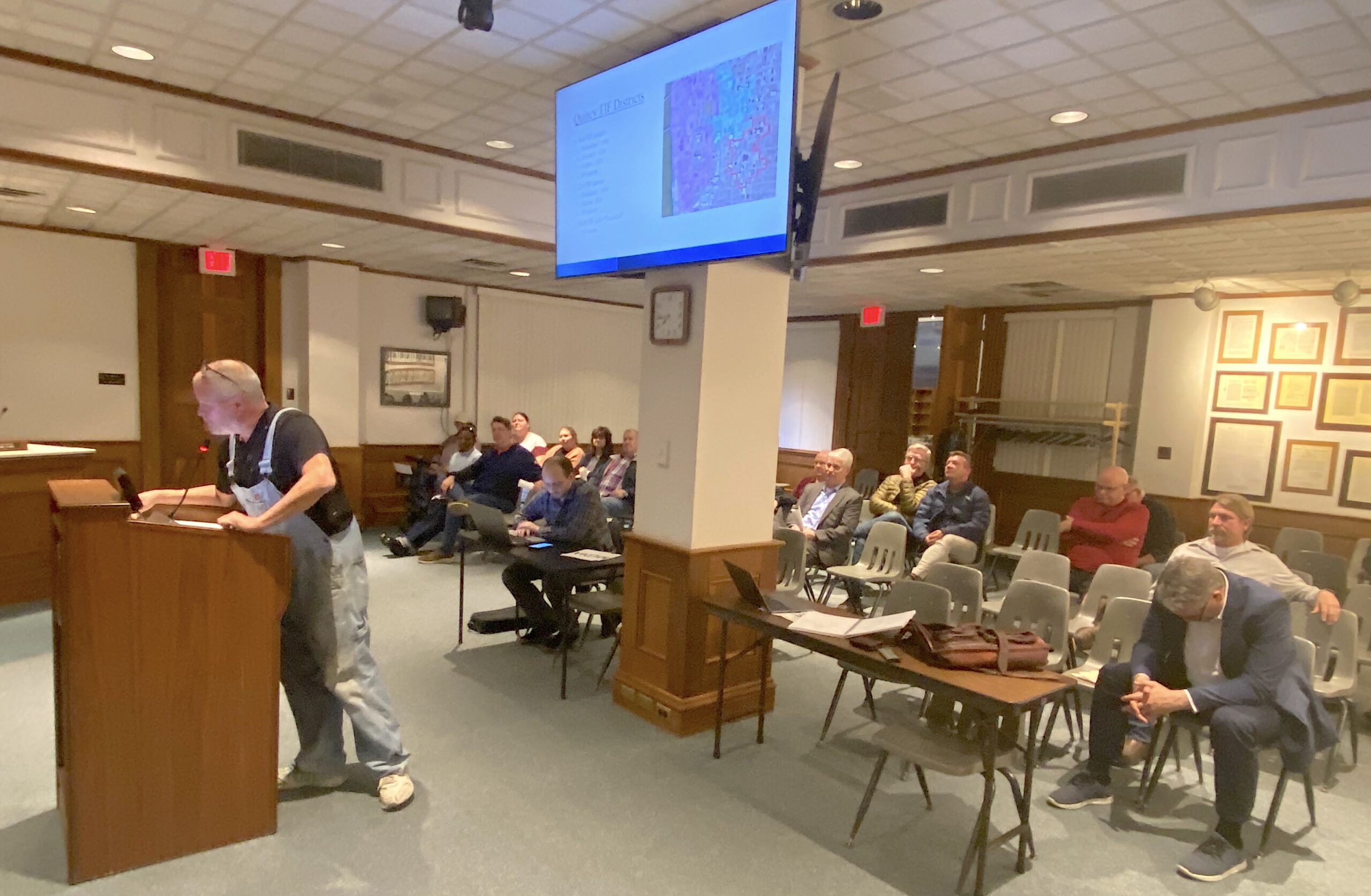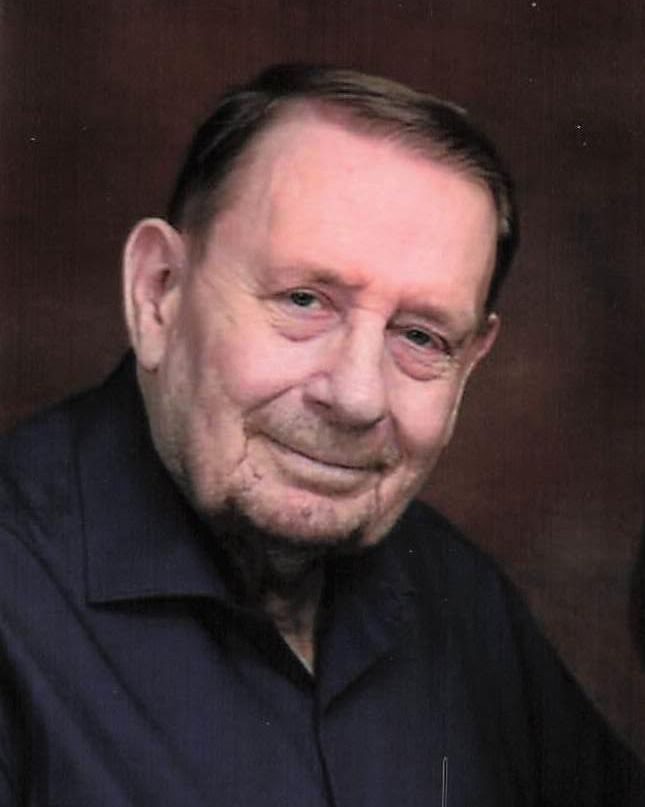‘I don’t see how we can not pass this’: Support for TIF South overwhelming during public hearing

QUINCY — If you expected fireworks, disagreements and vitriol during Thursday night’s public hearing for the TIF South redevelopment project, you were disappointed.
After brief presentations about the TIF were made by Chuck Bevelheimer and Jason Parrott with the city’s planning and development department, the floor was opened for the public to give their opinions to Mayor Mike Troup, nine aldermen in attendance and anyone else who was in City Council chambers.
The final score was 18-0 in favor of those who stepped to the microphone and voiced their support for establishing the South TIF, which would be the third TIF in the city if the City Council eventually approves it.
“To see every single person come up here and talk about this, I don’t see how we can not pass this,” 3rd Ward alderman Ken Hultz said after the public comment portion of the meeting concluded. “I too was once part of the business enterprise zone, and I agree with almost everyone out there.”
“The public, of course, had a chance to speak on this, and so far of what I’ve seen, the naysayers have not come up to the mic to dispute any claims or speak against it,” 6th Ward alderman Jake Reed said. “So I think it’s pretty clear, at least given this opportunity, what the public thinks. As far as I’m concerned, I’m in favor.”
Bevelheimer said “the clock now has started” for the city to put the South TIF proposal on the City Council agenda — between 14 and 90 days after the close of the public hearing.
“I don’t want to get things confused with the (city) budget process,” he said. “We may want to talk to the administration about timing. I don’t want to overload anyone. I also have an enterprise zone process moving forward for United Alloy and a public hearing set for that in April. We’re going to look at a calendar to figure out what date works best.”
The proposed South TIF district is roughly in the area between Sixth and 11th Street, from Jersey to Ohio. Parrott said letters about Thursday’s meeting were sent to anyone living within the TIF or 750 feet of the TIF. He said he and Bevelheimer also met with the five people who own the most property within the TIF — Mark Krogman, Mike O’Brien, Shane McDermott, Dan Neiswender and Andy Caley — to “make sure they knew what was going on.”
“We really didn’t know what to expect,” Parrott said. “We were ready to answer questions. We were ready for anything.”
Bevelheimer said he hasn’t received much negative feedback.
“Some people say, ‘Honestly, I don’t care. It doesn’t impact me, and it doesn’t raise my taxes. So why am I worried?’” he said. “That was the average Joe comment. Some people like Andy Caley and Mark Krogman said, ‘Yeah, I’m all for this. What can I do?’’
“There are the comments we see on social media that are against it. Had there been somebody here wanting to express those, it would have been good to hear directly,” Parrott said. “If somebody has a question, if somebody wants to debate, call our office. We will sit down with you and go through what we’ve got.
“If you listen to all our info and still don’t like the idea of a TIF, that’s fine. That’s your opportunity. As long as you’re informed, you can make your choice. We don’t want people to say, ‘We were uninformed on it.’”
A TIF is a mechanism for municipalities to spur economic development in specific areas that are blighted and deteriorating. To do this, local taxing bodies create a TIF redevelopment project area, or TIF district, whereby the equalized assessed value (EAV) of the property in the area is set at a base amount. Property taxes collected on properties included in the TIF district at the time of its designation continue to be distributed to the school districts and all other affected taxing districts in the same manner as if the district did not exist.
A tax increment is the difference between the amount of property tax revenue generated before TIF district designation and the amount of property tax revenue generated after TIF designation. Only property taxes generated by the incremental increase in the EAV of these properties after that time are available for use in the TIF district by a municipality.
Parrott said that for the TIF South to qualify as a conservation area TIF, it must have a significant number of buildings in the area that are more than 35 years old, high vacancy rates and aging infrastructure.
Parrott noted in his presentation that the starting base EAV in the TIF West, established in 1998, was at $5.3 million and now is at $5.1 million — a 3.0 percent decline. However, the current EAV is $14.1 million — a $166.4 percent increase — and the current TIF increment is $9 million.
The starting base EAV in the TIF East, established in 2010, was at $6.9 million and now is at $6 million — a 12.7 percent decline. However, the current EAV is at $8.2 million — a 19.9 percent increase — and the current TIF increment is $2.2 million.
Parrott said the city has invested $17 million in downtown public infrastructure since the establishment of the TIF West in 1998, paying for 13 streetscapes, four parking lots, several blocks of rebuilt streets, the lighting of the Bayview Bridge, the Riverfront Connector Trail and new water/sewer lines for the Brewhaus Townhomes at Eighth and Jersey.
However, $6.1 million (35.8 percent) of the TIF revenue was spent. The remaining $10.9 million came from other sources — state funds, private funds or water/sewer funds.
Most of the people who spoke during the public comment forum were business owners, and many of them simply wanted to echo the comments made by the first public speaker — Bruce Guthrie, president and CEO of the Quincy Area Chamber of Commerce.
Guthrie said federal and state governments have reduced their support for economic development, so tax increment financing permits municipalities to accept some of the responsibility without raising local property taxes to fund public investment.
“The current TIF districts have been able to take financial pressure off the city general fund so they can focus their dollars on other areas in the rest of the city budget,” he said. “There are several million dollars’ worth of infrastructure projects downtown. Where’s that money going to come from? What are the solutions? We cannot continually kick that down the road, but that’s how we’ve gotten to where we are now by doing that.
“We do not need or have to stop any current TIF district. They have proven to be successful. Let’s continue that success and economic development in the TIF South.”
Miss Clipping Out Stories to Save for Later?
Click the Purchase Story button below to order a print of this story. We will print it for you on matte photo paper to keep forever.

